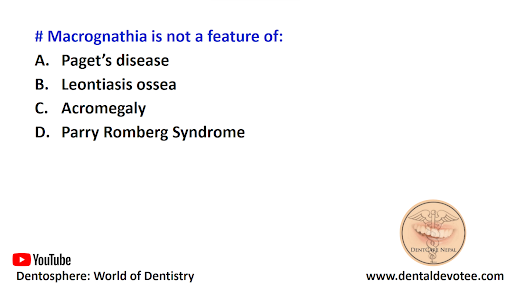# Which of the following is not true with regard to anterior open bites (AOBs)?
A. Digit sucking is commonly associated with symmetrical AOB with associated posterior cross-bite
B. An AOB of skeletal etiology is associated with an increased Frankfort-mandibular plane angle
C. An AOB due to digit sucking can usually resolve spontaneously in the early mixed dentition stage
D. An AOB in permanent dentition cannot be treated with orthodontics alone
The correct answer is A. Digit sucking is commonly associated with symmetrical AOB with associated posterior cross-bite
Digit sucking often presents with an asymmetrical AOB with associated posterior cross-bite. An AOB of skeletal etiology is when the vertical component of facial growth is disproportionally greater than the horizontal growth. The patient presents with a 'long face', with an increased lower anterior facial height, pronounced antegonial notching, retrognathic chin, and reduced interincisal angle.
A symmetrical AOB may be associated with endogenous tongue thrust. An AOB due to digit sucking usually resolves when the patient breaks the habit in the early mixed dentition stage, but if the habit is not broken by the late mixed dentition stage a deterrent appliance may be fitted. If an AOB is present in permanent dentition it is unlikely to resolve spontaneously. In some cases, it is possible to close mild AOBs with the orthodontic intrusion of molars.







